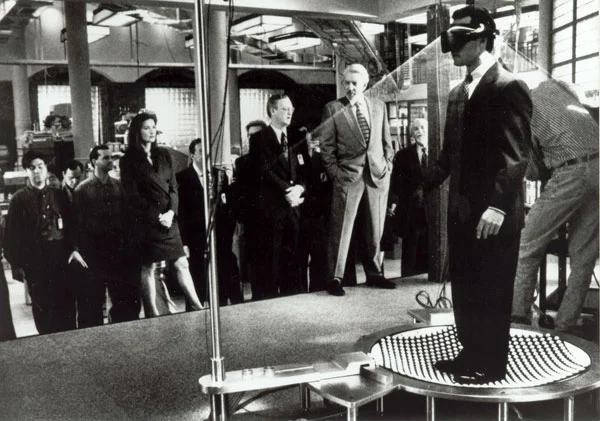Andreessen Horowitz, the ScarJo of venture firms, has just put $75 million into Oculus Rift to help the company take its technology mainstream. But, 3D isn’t really taking off, and has never really taken off, beyond short term hype.
We’ve have had 3D movies with glasses, and we have them again, now. We have had stereoscopic VR based headsets and systems before, and we have them again, now. We all want to live on the Holodeck on the USS Enterprise, Picard-edition, but it’s not going to happen in our lifetime.
So, how come everyone is all Oculus Rift crazy now?
In the last year and a half, Oculus Rift has gone from boffins in a garage to 70 engineers including the great John Carmack. The company claims to have over 40,000 developers and enthusiasts building content for its devices. The company has done a great job of creating enthusiasm and buzz around its platform.
But, now, they want to build millions of headsets and make their VR systems a standard, in the same way as gesture control, I guess. Is this stuff any different? Yeah, it is. Gesture control is intuitive and great in front of a game screen, but it looks weird in public.
That hasn’t impeded Oculus Rift getting a $75MM Series B investment led by Andreessen Horowitz, which numbers blue chip start-ups like Facebook, Twitter, Airbnb, Skype and GitHub in its portfolio. We’ll give a shout to Spark Capital, Matrix Partners, Formation 8 and Founders Fund, which have all invested capital in Oculus Rift to the overall tune of $90 million.
On its corporate blog, the company says:
VR has the potential to revolutionize the way that we live, learn, play, communicate, and much more. As a community, we’ve only just begun to scratch the surface.
And Marc Andereessen also says:
“I first worked in 3D interactivity and virtual reality over 20 years ago at the University of Illinois. I’ve been actively following VR ever since. Like the iPad delivered on the Newton’s vision of tablet computing 20 years later, Oculus delivers on the potential of VR that we saw but couldn’t realize at the time. We believe Oculus will not only alter the gaming landscape but will redefine fundamental human experiences in areas like film, education, architecture, and design. Oculus is at the tip of the iceberg of its potential, and we’re incredibly excited to help them change the world.”
Okay, that sounds all fine and dandy, but the history of VR is rife with the promise of a sci-fi future, but it has failed to materialize.
The first VR head mounted display (HMD) dates back to the 60s and to one of the pioneers of computer graphics, Ivan Sutherland. His HMD was used by the military in room size simulators that used the earliest wireframe modeled VR environments.
Sutherland would go on to form Evans & Sutherland with David Evans, in 1968, the original 3D simulation and VR company that spawned the giants of computer graphics including Silicon Graphics , Pixar, and Adobe through its association with the University of Utah. Jim Clark, a founder at SGI, Ed Catmull, a founder at Pixar, and John Warnock, founder at Adobe and invetor of PostScript, would all gravitate to research and work around the E&S campus.
None of these guys really pushed VR, although they all dabbled in it academically. You can read a pretty good history of VR here to get your own perspective. It stops at 2011 but there’s nothing that has dramatically changed the dynamics of the market since then, Oculus Rift or no Oculus Rift.

This stuff is expensive. The experience does not lend itself to a consumer because, it is awkward. You won’t see competitive gaming happen with VR headgear. We’ve been through this before.
Relegating it to the mainstream means convincing people who are not “into” this kind of stuff to spend the premium for the experience. But, haptic devices, and gesture control were beyond the reach of most people 10 years ago and now they are easily found and used in everything from gaming consoles, to smartphones.
However, I can’t say that I see the HMD approach to VR ever going mainstream. Mobile computing and now smartphones have unencumbered people. They do not want to be restricted in any way. The notion that they will want to be adorned with technology that creates a new reality instead of augmenting the existing one just seems like anathema to me.
Maybe you see a future where there is an Oculus Rift equivalent to Google Glass, but we have yet to see the impact of Google Glass beyond the hype that comes with Google’s marketing and controlled exposure of the device.
Entertainment is still the number one market for Oculus Rift. That’s the mainstream gold the company seeks. Well, you know, Nvidia has VR headsets, too. Think Sony can’t find an alternative platform once Oculus Rift, if Oculus Rift, shifts the economics favorably towards mass market consumption?
This doesn’t seem like a great investment but the guys involved are passionate and super smart. Time will tell.






